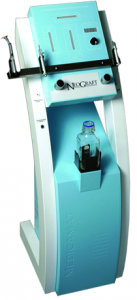
To fully understand the NeoGraft procedure, let’s take a look at the history of its origin. Hair transplantation surgery began in 1939 when Japanese dermatologist Dr. Okuda first documented his surgical attempts to restore hair in burn victims. Dr. Okuda used a “punch technique” to extract sections of hair-bearing skin, which were then implanted into the scarred or burned areas of the scalps. After skin grafts healed, hair continued to grow in these previously bald areas.
In 1943, another Japanese dermatologist named Dr. Tamura refined hair transplant surgery by using significantly smaller grafts of one to three hairs, a process similar to many techniques used today.
These surgical breakthroughs remained lost to Western medicine until 1952. In that year, a New York dermatologist, Dr. Norman Orentreich, performed the first known hair transplant in the U.S. on a man with male pattern baldness.
Orentreich’s theory of “donor dominance” demonstrated that hair from the back and sides of men’s scalps were generally resistant to balding. But Dr. Orentreich’s surgical technique, which replicated the punch graft technique of Dr. Okuda, produced less than satisfying results for men.
By the mid-1990s, hair restoration surgeons abandoned these large grafts in favor of smaller grafts that produced more natural-looking results.
 But it wasn’t until the NeoGraft device came on the scene that options improved dramatically. The first FDA approved follicular unit harvesting and implantation system delivers the FUE technique, the most advanced and best hair transplant technique in the industry.
But it wasn’t until the NeoGraft device came on the scene that options improved dramatically. The first FDA approved follicular unit harvesting and implantation system delivers the FUE technique, the most advanced and best hair transplant technique in the industry.
Using pneumatic controls to precisely extract complete individual hair follicles that are immediately transplanted to the selected areas of the scalp, the NeoGraft procedure provides absolute exact harvesting and placement that gives you healthy, new hair growth that lasts.
A typical NeoGraft procedure session involves harvesting 1,500 to 3,000 grafts, which takes a full day of out-patient care. You will arrive in the morning and have your procedure completed by late afternoon
In three to five months you will begin to grow new hair. The transplanted hair grows in very thin at first initially and gradually grows thicker and fuller. Since the hair follicles that are transplanted to the balding areas are genetically resistant to going bald, they will continue to grow the same as if they had been left in the bald resistant donor area. After one year your new hair will be fully mature and continue to grow for a lifetime.



